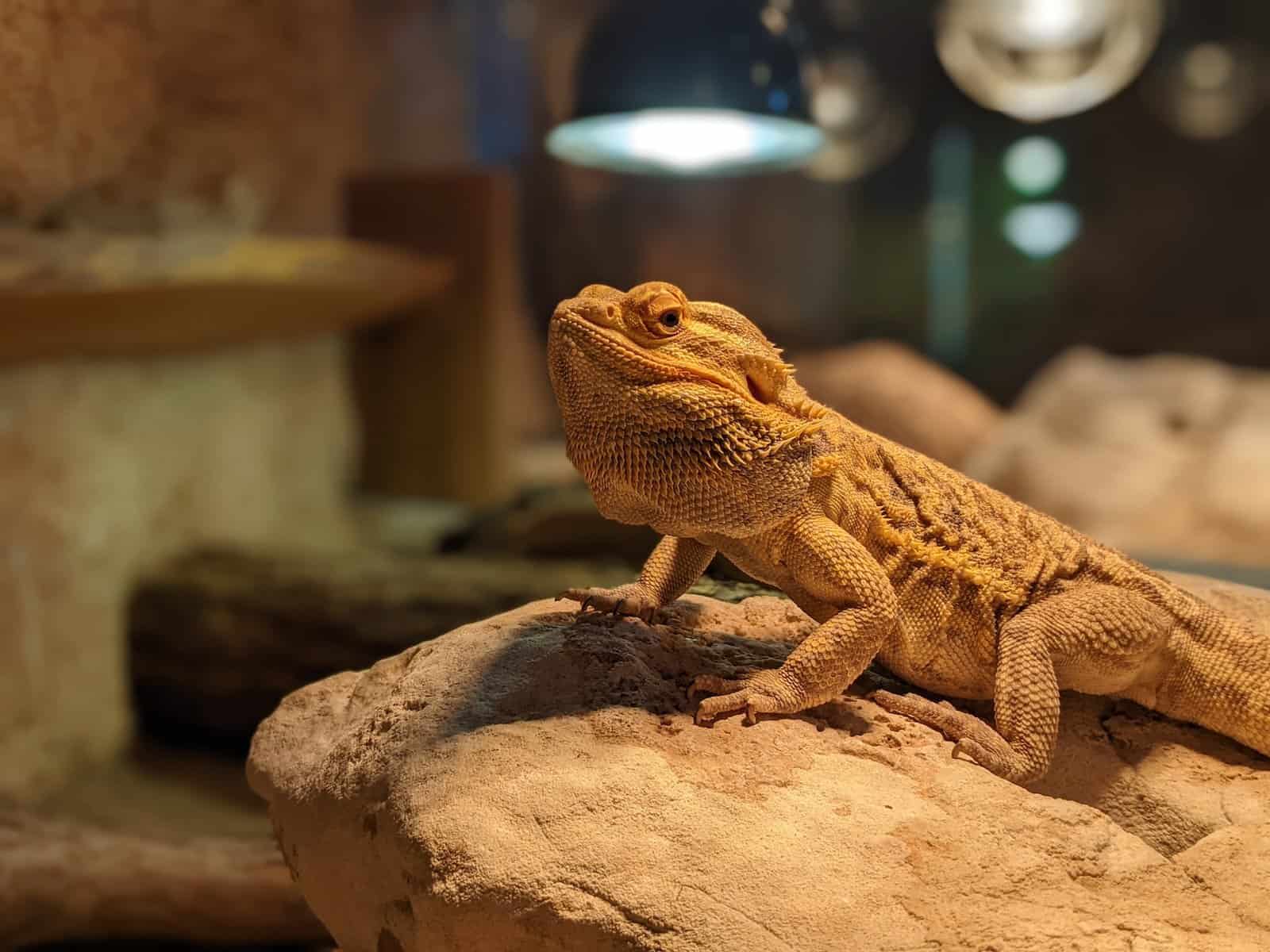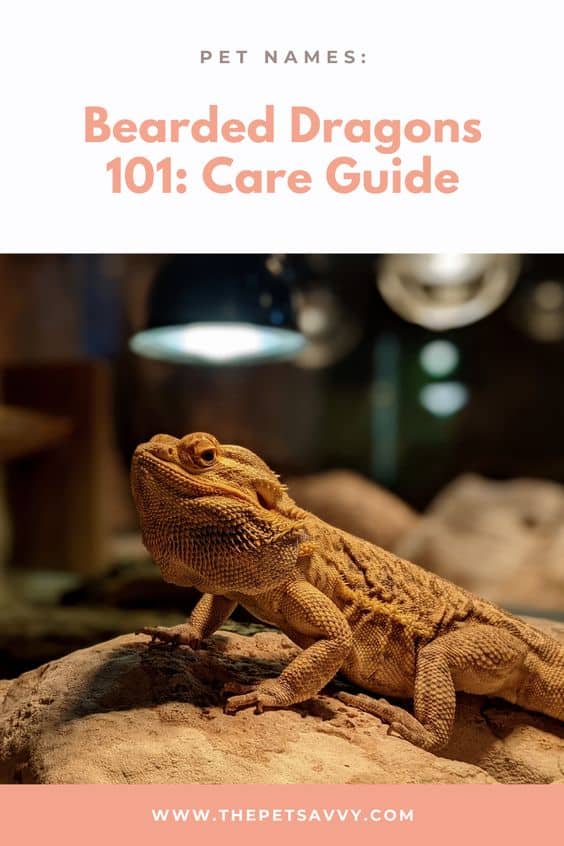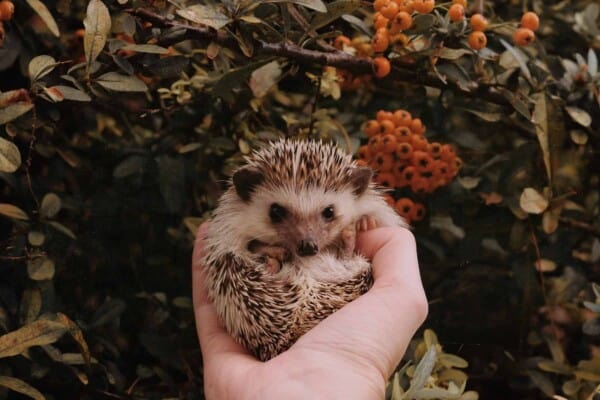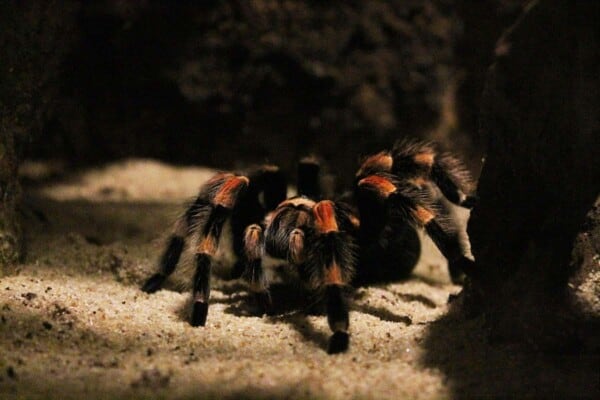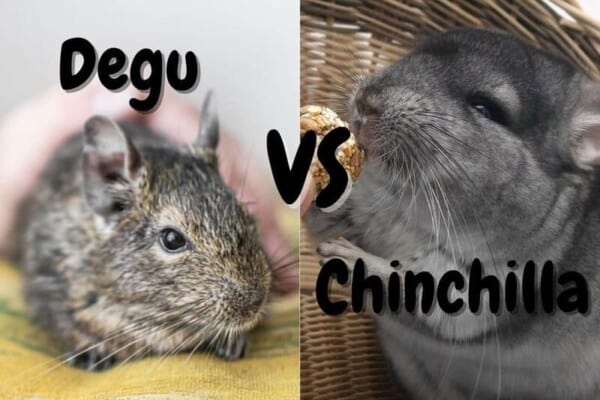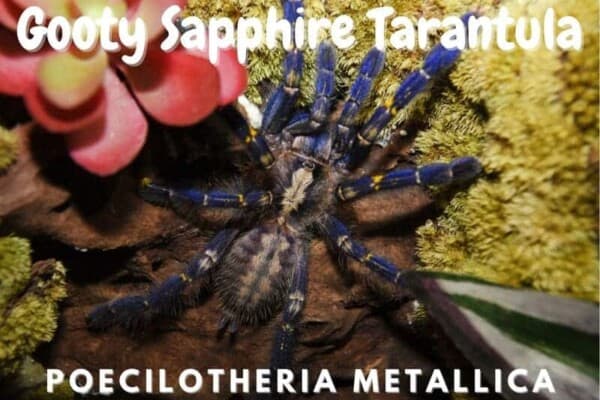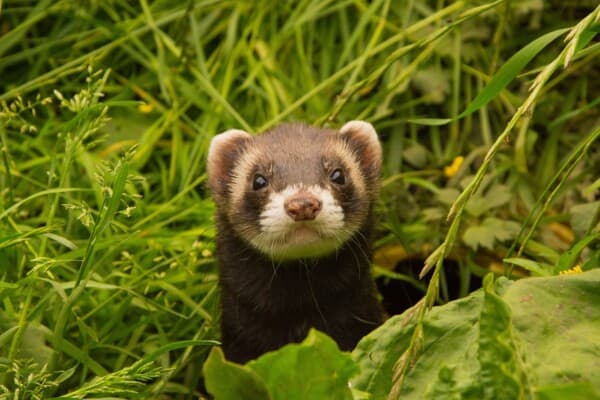Bearded dragons are known for always being the life of the party. They are smart, fun and ever so curious, to the point where they will never stop exploring around the house to see what else you have in store for them.
Bearded dragons are also friendly enough that they can be welcomed into any home whatsoever, and they are absolutely amazing for beginners, thanks to how docile they are and how easily they can adapt to captivity.
Commonly referred to as Beardies, the bearded dragons can be found underneath trees in the wilderness of Australia, and they’re known for the “mouth open smiles” they have during the peak hours.
Funny enough, they don’t actually smile in order to convey any emotions whatsoever, instead they just smile because they want to cool off.
On top of all of that, bearded dragons are very easy to take care of since they can eat almost any leafy vegetables and insects, and depending on their preferences, they can either spend all of the day basking in the sunlight or they can hide away in the shade.
Regardless, the bearded dragon is by far one of the most popular reptiles to keep as a pet, and as the years roll on over, more and more people start to look into adopting or purchasing one of their own.
If you are one of these people and you would like to find out more about the Beardies then keep on reading because we decided to prepare a little ultimate care guide for you, showcasing everything there is to know about the bearded dragons, starting off with:
The History of the Bearded Dragon
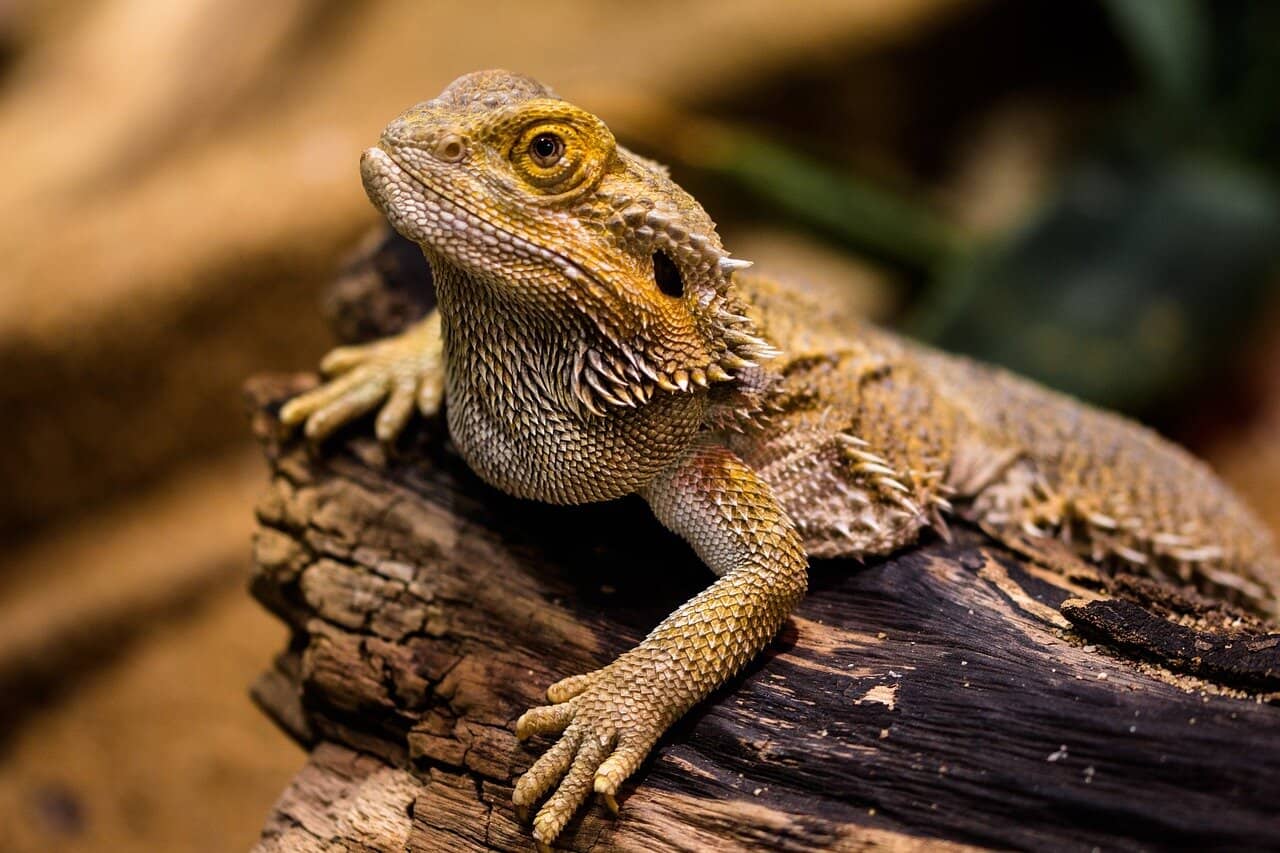
Bearded dragons are known for being some of the easiest lizards to own and take care of, and as such they are considered to be some of the best exotic pets for beginner owners around.
But before you can actually buy a new pet, we always recommend that you look through the animal’s history so that you can better understand its significance.
With that being said, the bearded dragon is known for being a native of the deserts of Australia, and it is part of the Agamidae family of lizards.
Bearded dragons have their signature broad, triangular-shaped head and a pretty flat body. Their jaws and torsos are lined with scales and they are a bit rough to the touch.
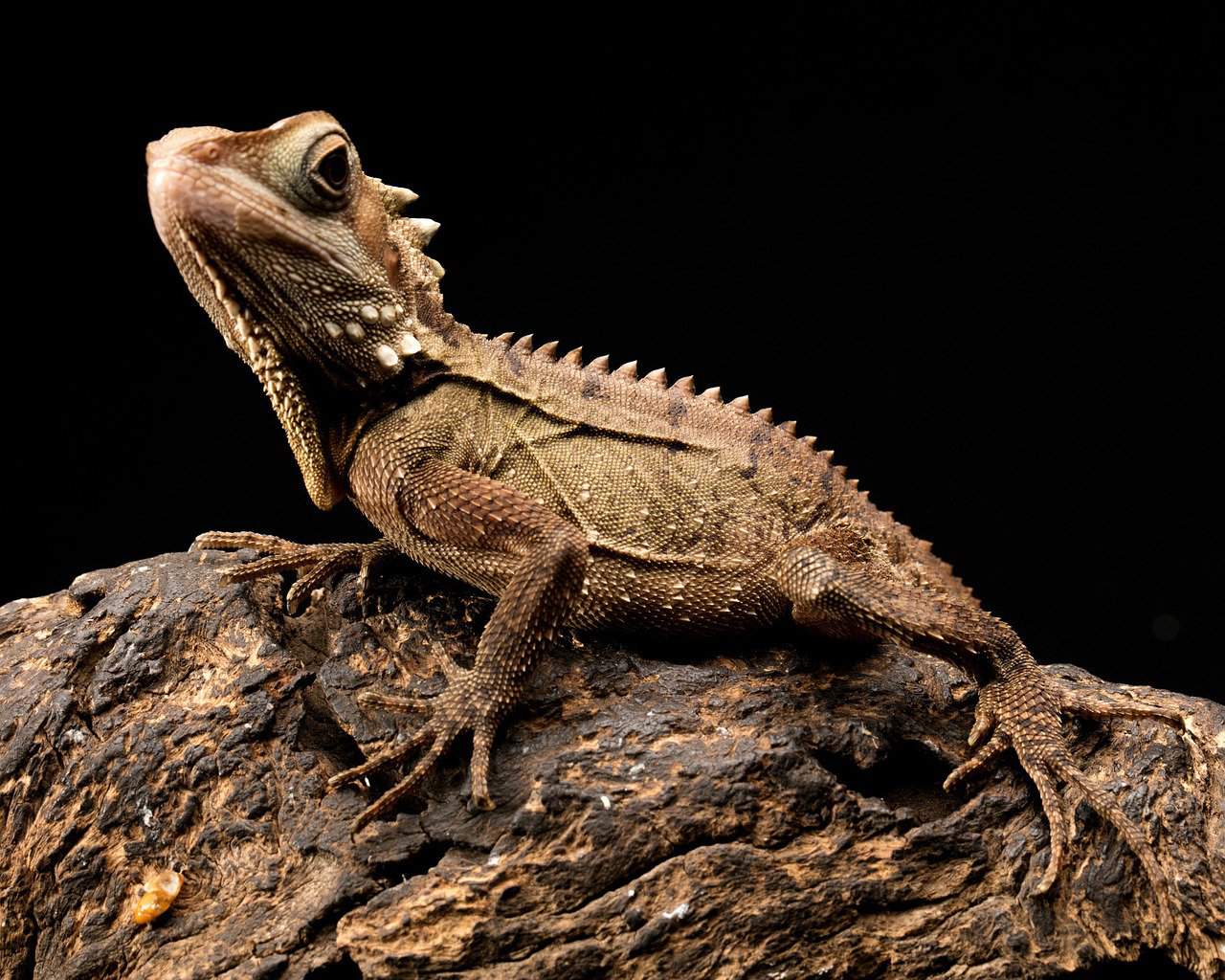
Adults can grow up to be as large as 24 inches in length, and for the most part the males will be far larger than the females by a lot.
Back when they were first discovered around 1926, they were given the name “bearded dragons” thanks to the gular pouch they have on their throats.
When push comes to shove, the bearded dragon will flare its gular pouch, making it and as a result its entire body seem larger and more threatening to its opponents.
At the same time, the throat area tends to darken quite a bit, almost becoming blackish, resembling a beard even more so.
Most of the dragons that you can purchase or rescue today are inland or central bearded dragons, although there are a total of eight different species for you to choose from.
What is a Bearded Dragon?
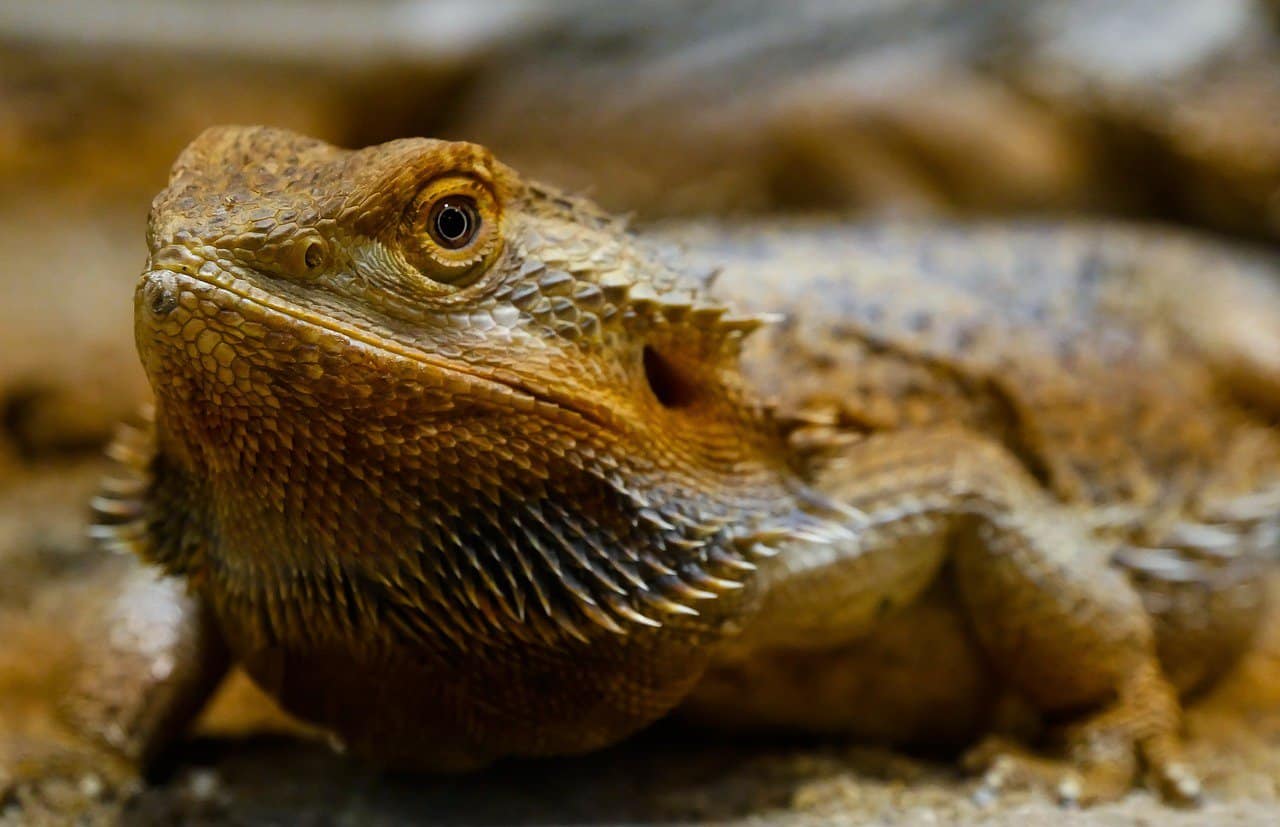
For those that don’t know, the bearded dragon is a semi-arboreal native lizard of Australia that is known for living either directly in the trees or on the ground near the trees.
You can refer to any of the 8 different species as members of the genus Pogona even though they all used to be in the genus Amphibolurus grouping up until recently
By far the most popular of the species is the Pogona vitticeps, or the Central Bearded Dragon. The reason for this is that it is by far the friendliest and most low-maintenance one around.
There are currently three main reasons as to why the bearded dragon is so popular amongst reptile owners, and they are the following:
- Bearded dragons can be found all across the US, which makes them very easy to acquire and it also makes them quite affordable.
- They are quite hardy creatures as they can survive through most climates with ease and they are capable of adapting to captivity pretty much overnight.
- Most other lizard species out there are nocturnal, so you will very rarely see them out during the day. This does not apply to the bearded dragons however as they are active both during the day and during the night, depending when they get their zoomies of course.
How to Take Care of a Bearded Dragon
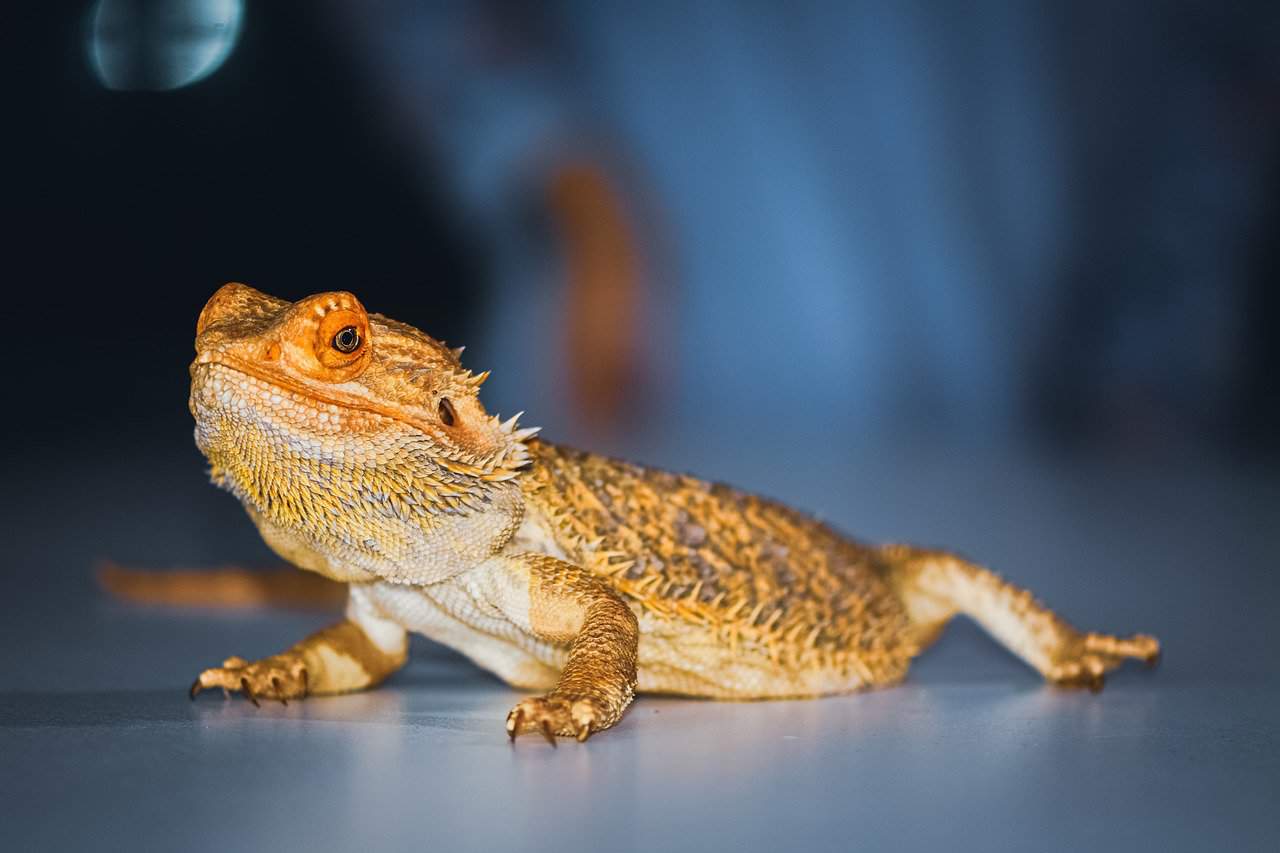
But regardless, let’s be honest here, if you clicked on this link then chances are that you already know what a bearded dragon is and are simply looking for new and exciting tips on how to properly take care of one.
If that sounds like we’re right on then this segment was made for you, as it will go through everything there is to know about taking care of a bearded dragon, starting off with the three basics which your bearded dragon can’t live without:
- A UVB lamp and an infrared lamp for heat.
- A lot of insects and leafy veggies on a daily basis to keep the small-sized monster at may.
- A glass cage which measures up to 36ft³.
The Tank
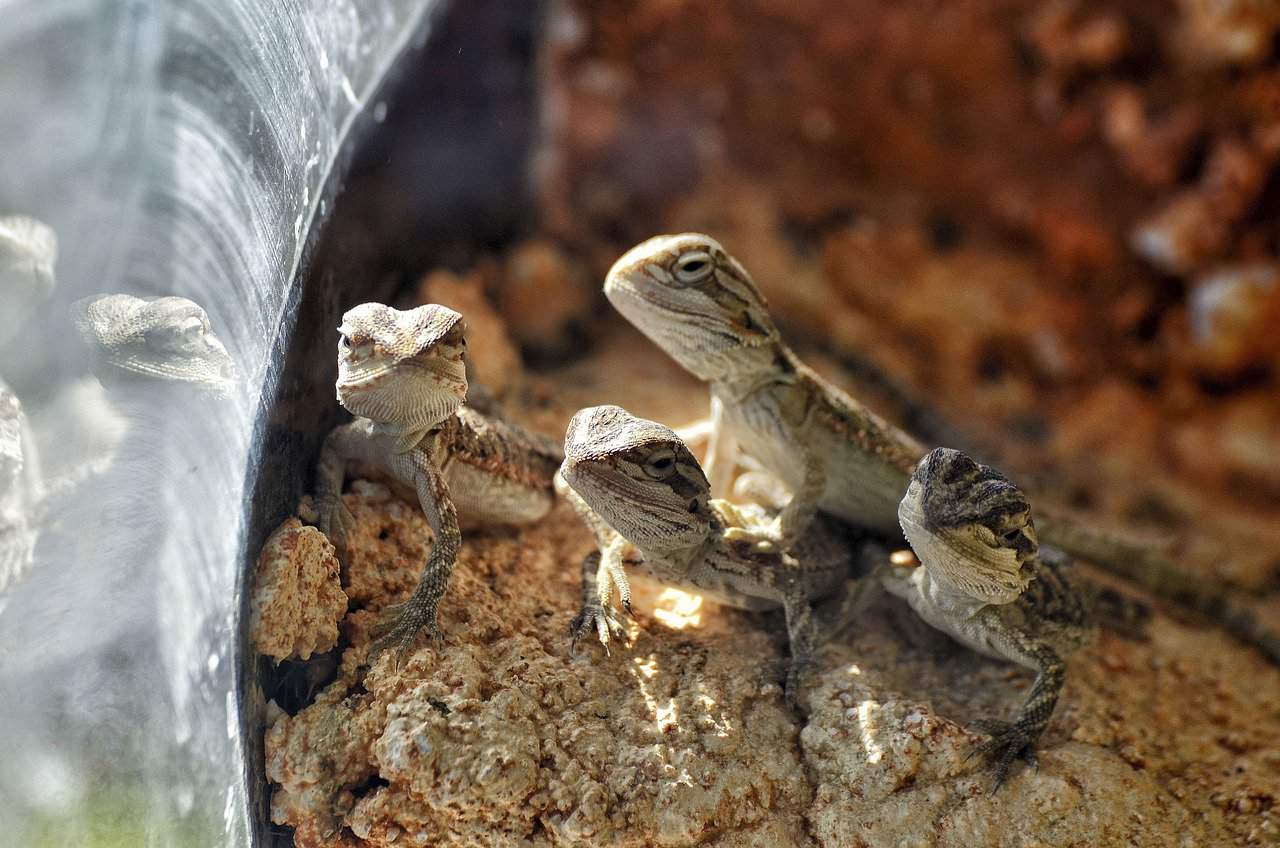
When it comes to the enclosure that your bearded dragon should stay in, we usually recommend that you go for a glass one with a screen top. It should be as large as four to six feet long, two feet wide and around three feet high.
You will need to invest in the tank quite a lot but it’ll be worth it at the end of the day, since anything smaller than that will hinder your bearded dragon’s growth and maybe even affect its health in the near or distant future.
In order to make the lizards feel more at home you will also need to replicate their natural environment by taking rocks and branches and scattering them around the place. These branches will also help give your pet enough shade to cool off during the heat.
Lighting and Heating
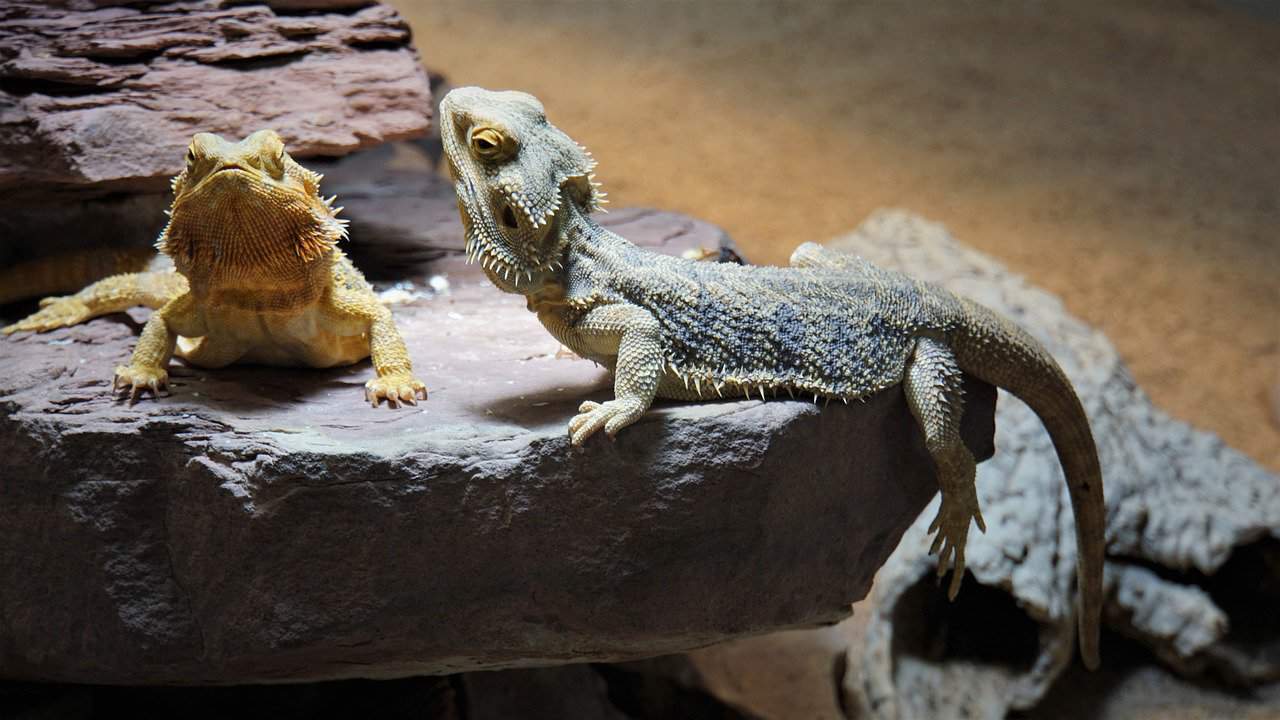
Being a diurnal lizard, most bearded dragons tend to sleep during the night and roam around during the day, but you shouldn’t be surprised if they also like to switch things up just because they’re bored. They also get their zoomies after all.
Bearded Dragons do require an ultraviolet light though in order to live long and happy lives. Without it and calcium supplements, the bearded dragon is at risk of getting Nutritional Secondary Hyperparathyroidism and Metabolic Bone Disease.
UVB bulbs also should be monitored with a UV radiometer and you shouldn’t forget to change them every year or so. On top of that you’ll also need to invest into a 40 to 75W infrared bulk that will help the Beardies bask properly.
Do keep in mind however that most of this will be meaningless if your bearded dragon prefers natural daylight over them. If this is the case then you should allow them to go outside, but only under close surveillance since they can easily dash on out of your range and into the wilderness if you’re not careful.
You should also have two different climates in your tank, with one of them allowing the Beardie to bask in the sunlight and the other allowing it to cool off. Your bearded dragon should catch on this distinction pretty quickly and it should pick the better one eventually on its own.
One of these sides should be around 95 – 105 Fahrenheit while the other should be around 80 Fahrenheit during the day, but as the night comes you should reduce it slightly so your friend can get a good night’s rest.
At the same time, you may want to invest in heating pads. Place them underneath the tank so that you may prevent any rocks from getting too hot to the touch.
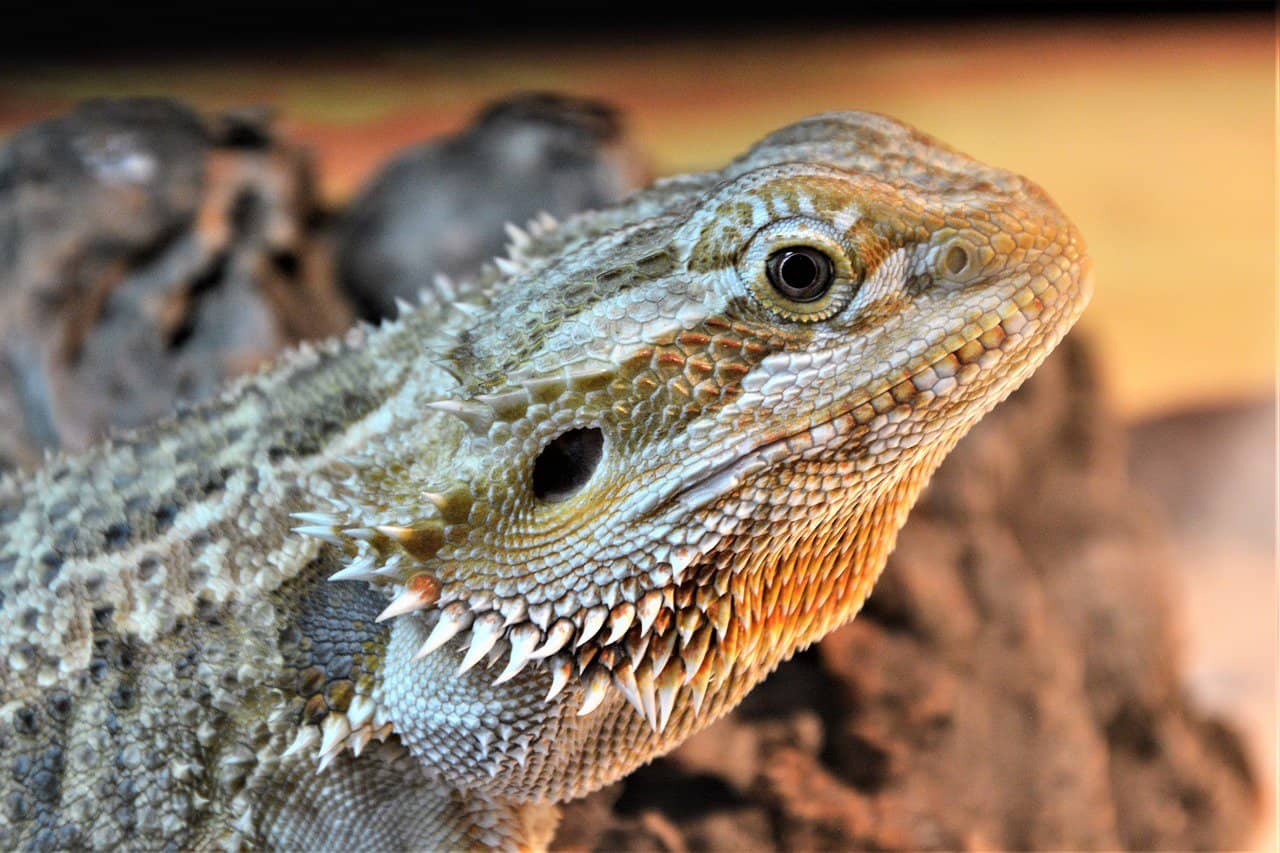
Also make sure to keep a lookout at your bearded dragon as they will show you whether they like living in their enclosure or not in no time.
If the temperature is just right and they are currently basking in the heat, you should be able to notice the fact that their ribs have expanded to the point where they almost look downright “flat”.
At the same time, if your bearded dragon’s mouth keeps opening and they stay like that for long periods of time then chances are that the tank is a bit too hot for them.
The humidity of the tank is also quite important as it should always float around the 30 to 40% mark. In order to make sure that it never surpasses or that it reaches that point you may want to mist the tank every 48 hours.
Of course, that at the end of the day though, the exact temperature and humidity you should be going for all depends on where you live and the bearded dragon you own. But typically, the warmer the temperature, the higher the humidity you should go for.
Substrate
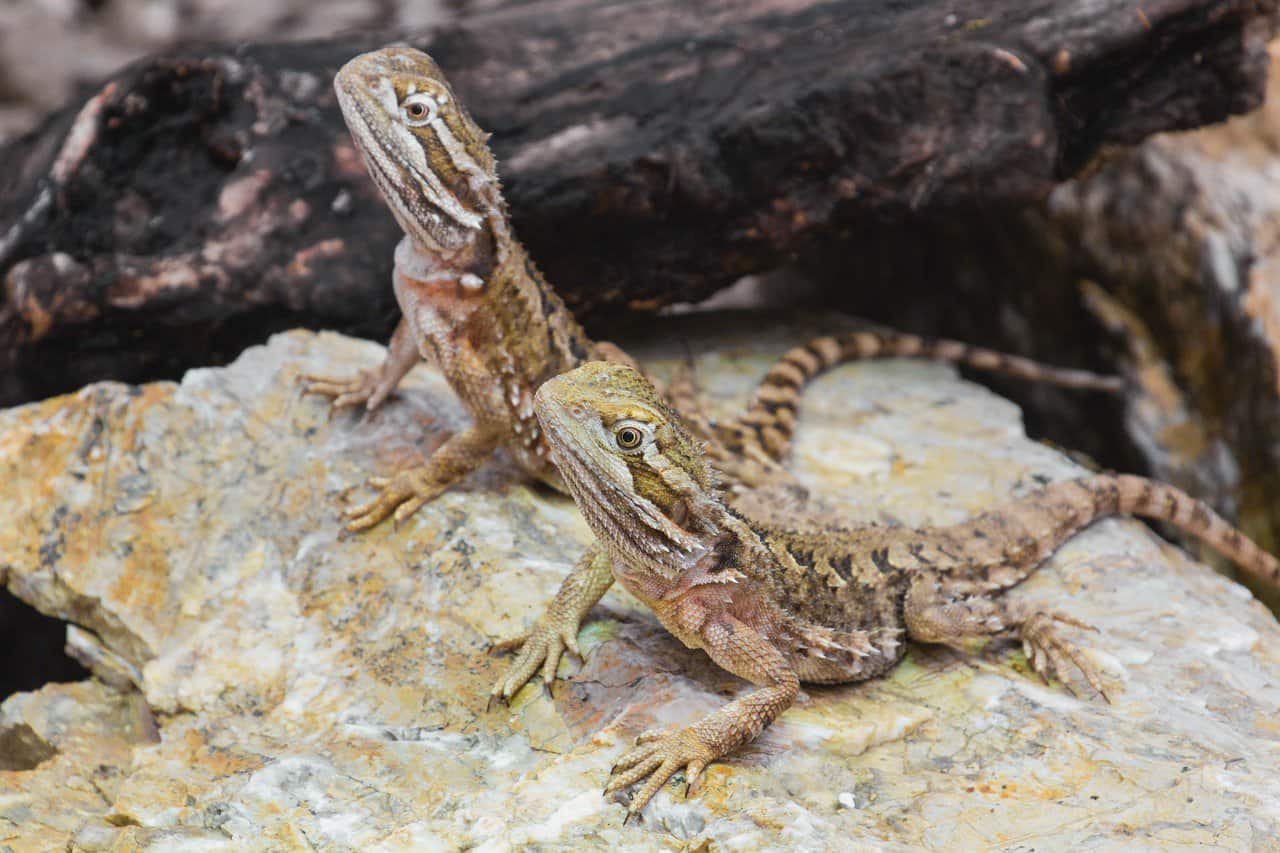
When it comes to the floor that your bearded dragon will be walking over, you may want to opt for sand or gravel just so that they may feel more at home in the enclosure.
At the same time though, do keep in mind that sand is not always the best choice because your bearded dragon may accidentally consume some of it which can result in a lot of gastrointestinal problems.
As such, it is recommended that you opt for newspapers and paper towels if you want to keep your bearded dragons clean while also making sure that they don’t ingest anything they shouldn’t.
Do make sure that you clean the substrate every now and then though, otherwise bacteria will start to grow on it and before long your bearded dragon’s health will be at an all-time low.
So, just to reiterate, when it comes to the tank type, we believe that a glass tank with a screen top is the best. Lighting wise, you should go with UVB and infrared lights. As far as the substrate is concerned, while going with sand or gravel is more authentic, newspapers are more practical and hygienic.
Bearded Dragon Diet
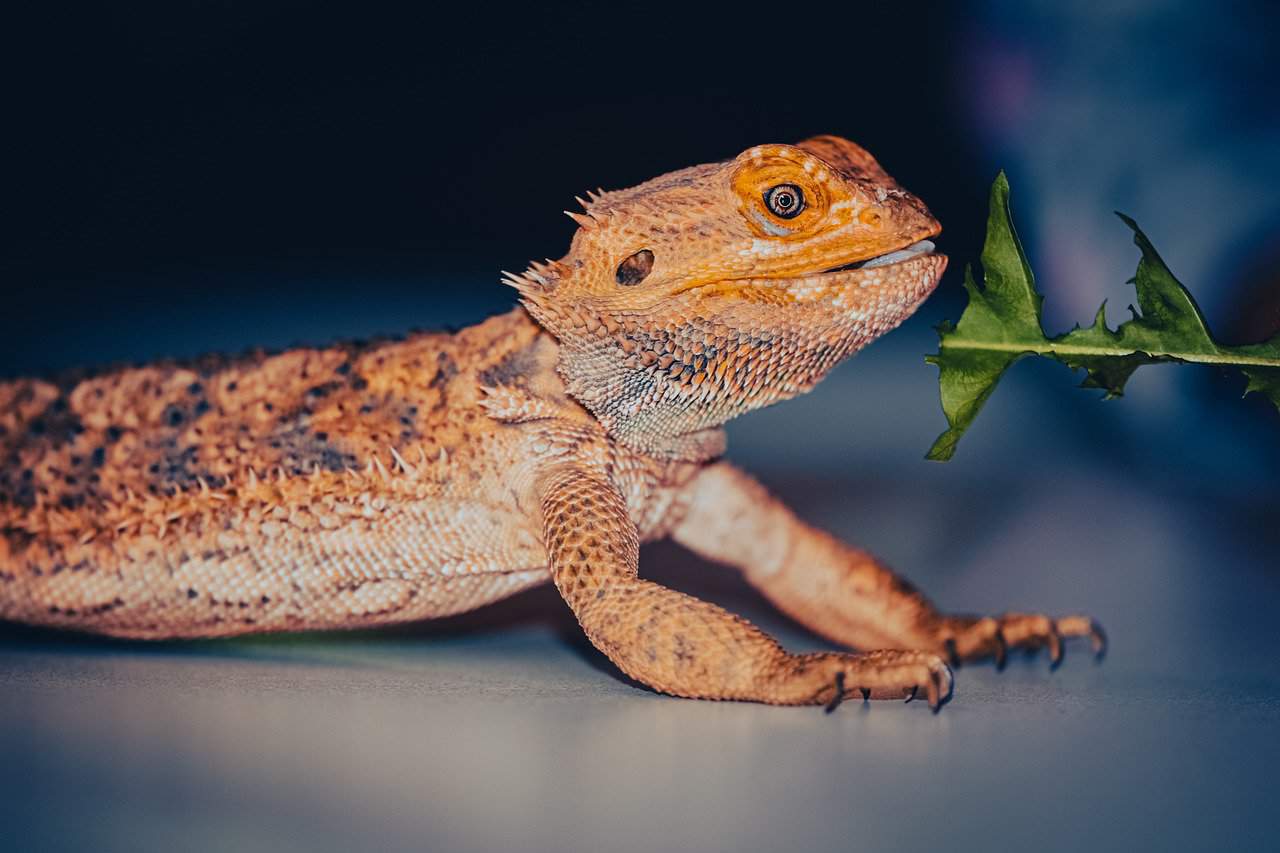
As mentioned previously, bearded dragons are omnivores, so you can feed them a mixture of vegetables and animal protein in order to keep them healthy.
Juveniles tend to be more insectivorous, but as they grow older and older, they will need bigger sized bread to keep them well fed.
In general though, you should know that the insects that you feed them should always be alive, and they shouldn’t be any bigger than the dragon’s eyes.
But regardless, these are the main fundamentals that should always be a part of your bearded dragon’s diet:
- Water
- Insects
- Vegetables
- Flowers
- Fruits
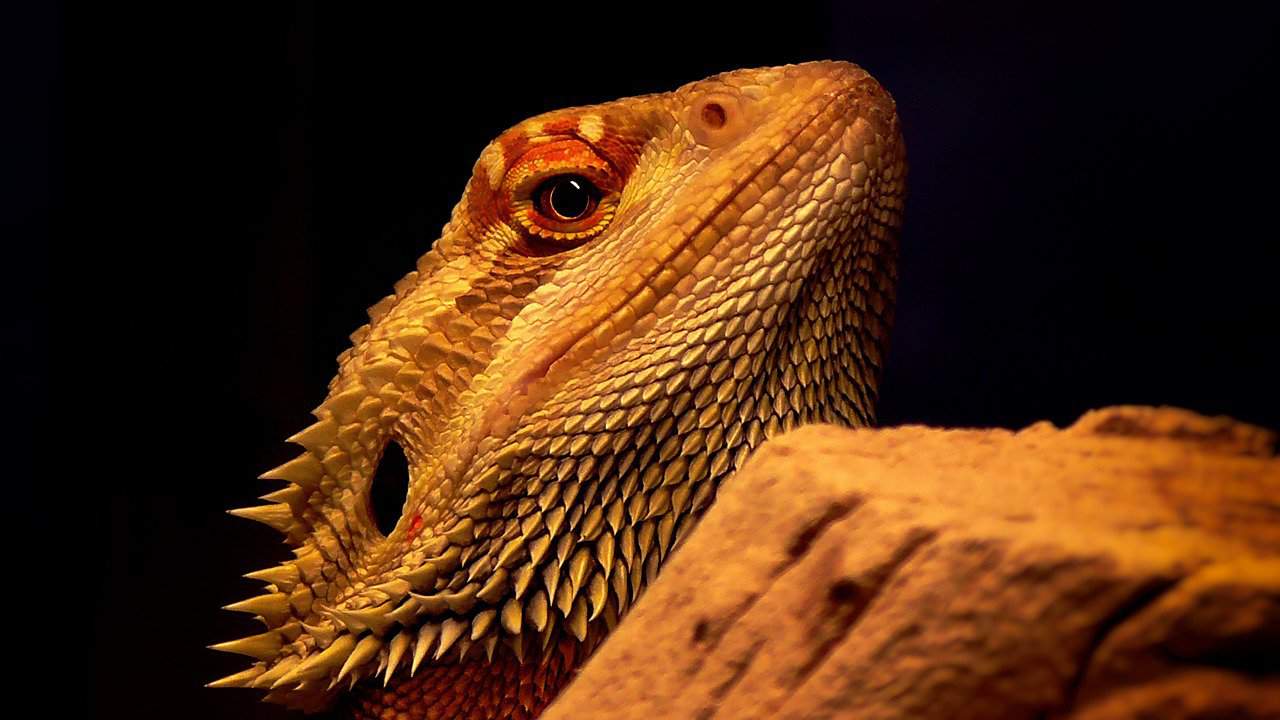
Water is a no-brainer and it should be placed in a shallow container and refreshed on a daily basis to make sure that they are never dehydrated.
Insects on the other hand will always make up around 25% of the adult’s diet. This is why you should invest in a wide range of insects for them to not grow tired of eating the same thing over and over again.
You can go for crickets, dubia roaches, super worms, phoenix worms, hornworms, silkworms, mealworms, grasshoppers, butterworms and even waxworms if you want to add a little flavor to their meals.
If you are incapable of feeding your bearded dragon any live insects you can still go for freeze-dried insects, but just so you know, these typically don’t have enough nutrients to get the job done.
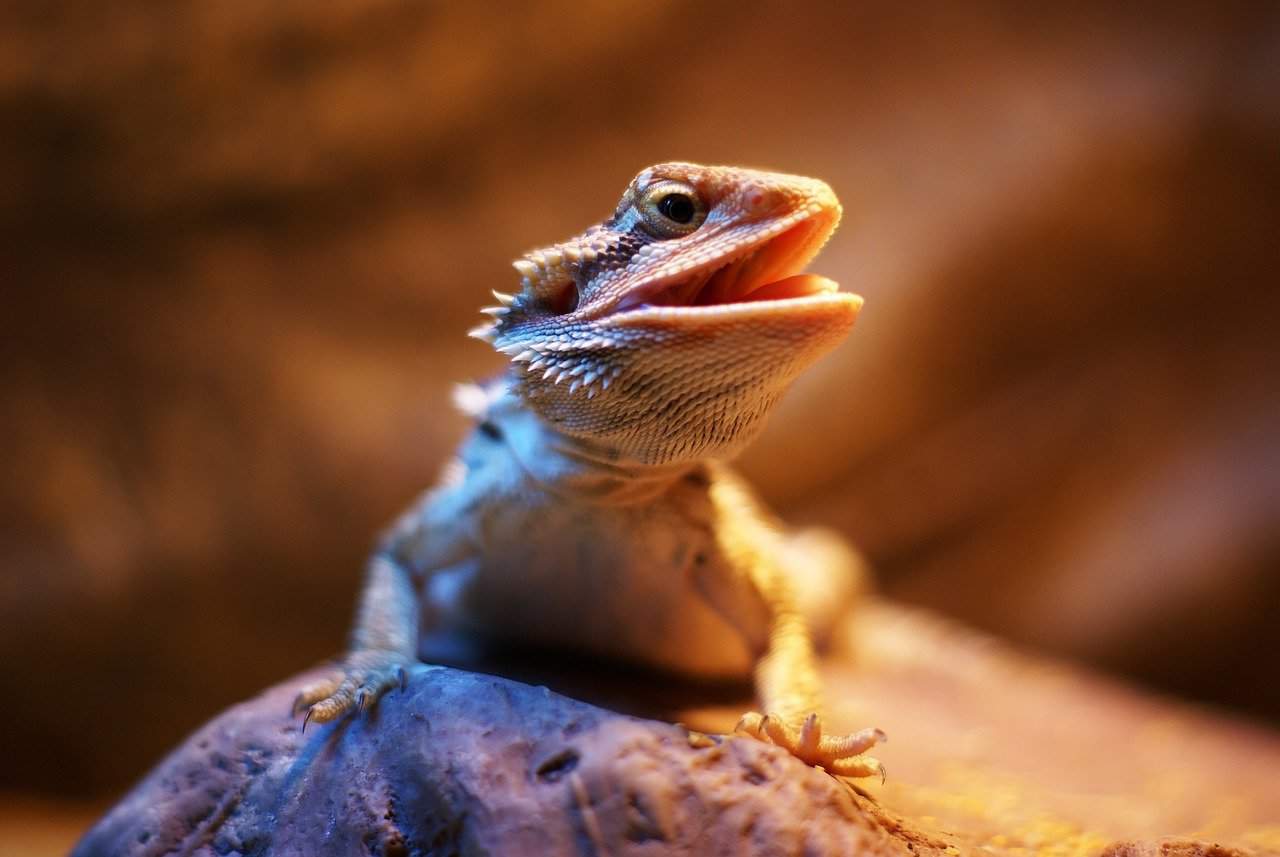
At the same time, feeding live insects to your bearded dragon means that you get to feed the insects beforehand too. This is very good for you as it means that you will be able to go through a gut-loading phase before you feed the insects to the bearded dragon.
The gut loading phase essentially implies that you take the insects and you feed them with a lot of nutritious food which will in turn help the bearded dragon exponentially.
Veggies on the other hand will be a much larger part of the adult bearded dragon’s health, with it making up around 50 to 55% of their diet.
We always recommend that you invest in at least 2 to 3 different varieties of leafy greens every day, just so that your bearded dragon never runs out of nutrients.
By far the most popular leafy greens to feed your bearded dragon include: romaine, dandelion greens, mustard greens, beat greens, collard greens, escarole and Boston lettuces.
You may also go with carrots, squash, zucchini, broccoli and peas for around 20% of its remaining diet too.
Last but not least you’ll want to invest into flowers and fruits. These should comprise less than 5% of the bearded dragon’s overall diet, with the most popular flowers being the hibiscus and the squash blossoms and the most popular fruits being melons, bananas, papaya and strawberries.
Bearded Dragon Health Problems
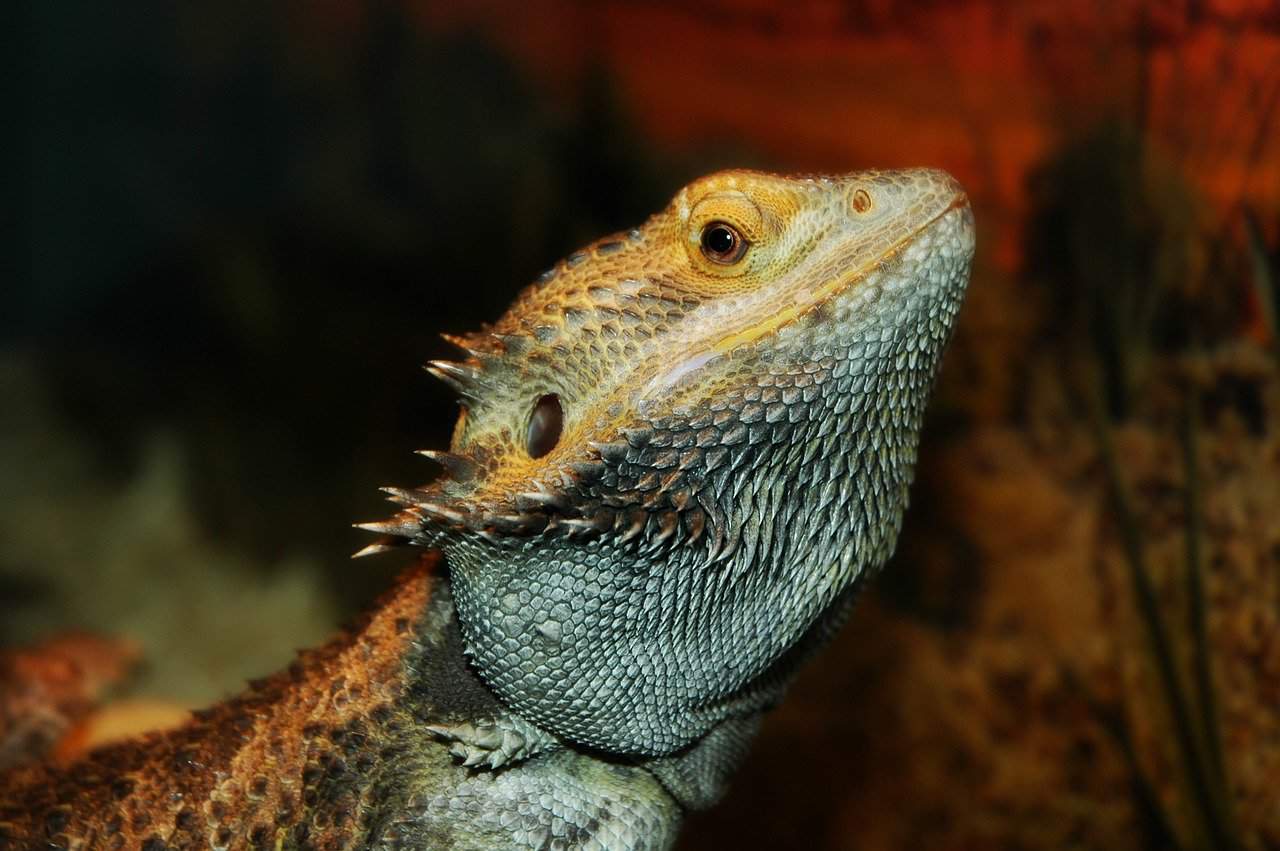
For the most part, as long as you have managed to properly manage your bearded dragon’s aforementioned needs, you shouldn’t have to worry about their health.
You may want to trim their nails every couple of weeks or so though, and every year or so you can have a veterinarian check their teeth to make sure nothing’s wrong alongside the rest of their body.
A fecal analysis will also help discern whether the bearded dragon has any intestinal parasites, and a bloodwork is always welcome to see if there is any need for an intervention.
But regardless, these are the most common infections and illnesses that the bearded dragons will succumb to:
- Adenovirus 1
- Coccidiosis
- Follicular stasis
- Metabolic bone disease
- Renal disease
- Periodontal disease
Last but not least we would like to mention the fact that as a pet parent, you should also make sure to check on your bearded dragon’s mental health, as they could very well be suffering from depression if you’re not careful.
Depression for bearded dragons can be spotted from sunken eyes, weight loss, sudden loss of appetite and overall weakness. If your bearded dragon’s undergone any of these issues before then you may want to contact a veterinarian to check them out.
Conclusion
So, does the bearded dragon make for a good pet? Absolutely.
It is a very easy pet to take care of, and while the original investment is quite high, you will not regret purchasing your very own bearded dragon anytime soon.

